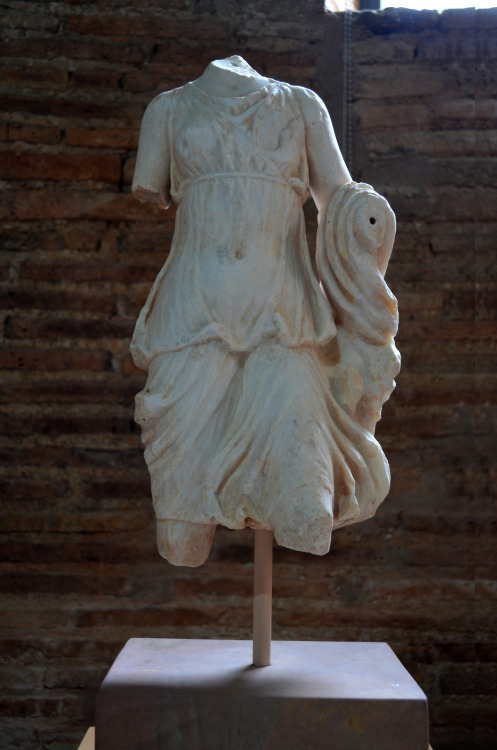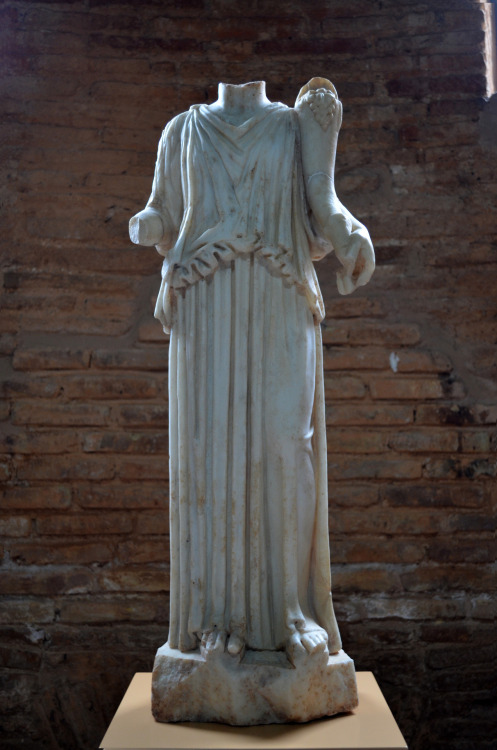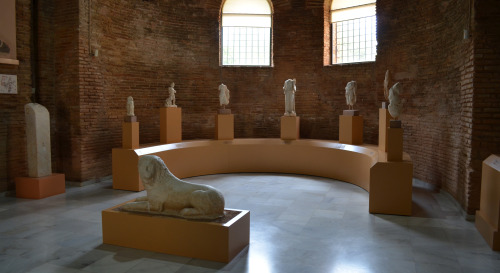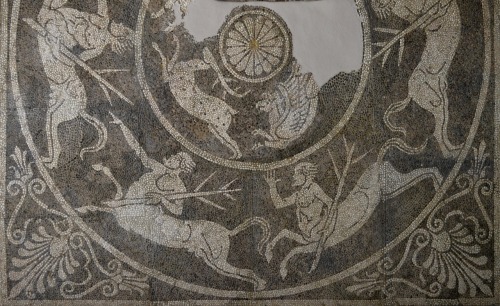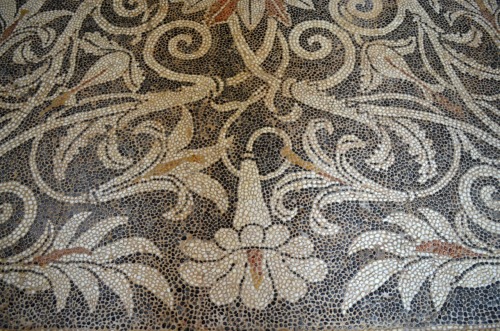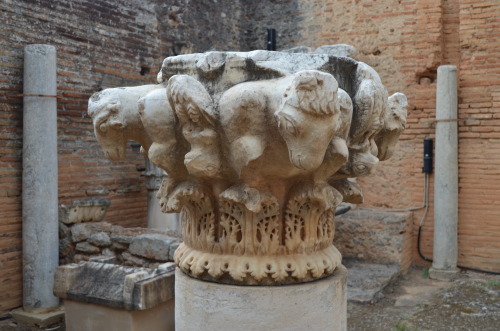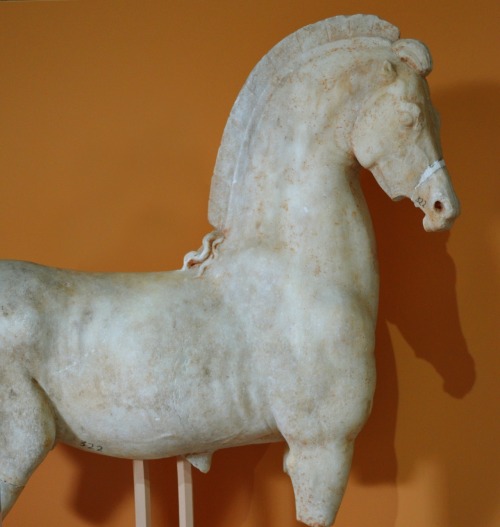greek-museums:Archaeological Museum of Ancient Sicyon:The Sicyon Museum is housed in part of the Rom
greek-museums:Archaeological Museum of Ancient Sicyon:The Sicyon Museum is housed in part of the Roman bathhouse to the north of the Hellenistic and Roman city. It was a public bath that served the needs of the city, but also a place of gathering for citizens to socialize with each other.The bathhouse of Sicyon, a brick structure that has been preserved in a very good condition over the centuries, with walls surviving for up to 4 meters. It was a characteristic landmark of the area up to the beginnings of the 20th century, known also as “Palaces”. In 1935 Anastasios Orlandos, who excavated Sicyon and uncovered the complex, restored four rooms to house the growing collection of Sicyon.Ancient Sicyon itself goes very back in time. Prehistoric settlements have also been discovered. These ancient origins are reflected in the local names, such as Aigialeia, from the mythical founder Aigialeus, and Telchinia, from the mythical metal-workers Telchines. The name Mekone which is also prehistoric was owed to the poppy plant which still floods the area in spring. According to ancient tradition the city took its name after the young king Sicyon who moved there from Athens. But Sicyon also means gourd, which are to be found in abundance in the area.During the so-called “Descent of the Dorians” the area was captured by the newcomers- it had been under the control of Mycenae before. The original population was not expelled from the area and circa 7th century B.C the Orthagorid family rose from their ranks and established a tyrrany in the city. The most important tyrnat was Kleisthenes, who ruled from 590 to 560 B.CDuring that time the arts flourished and it was then that the schools for sculpture and large-scale painting emerged. Sicyon sided with Dorian Sparta during the Persian and the Peloponnesian wars. In 396 the city was captured by Theban forces and Euphron of Sicyon had managed to overthrow the oligarchic regime and establish a democracy. Euphron was however murdered in Thebes later. The next prominent figure to meet the same fate was Aratus of Sicyon who had freed the city from the Macedonian rule. He was also murdered in Patrai.Sicyon became the new administrative center after Corinth’s destruction by the Romans. It shouldered by itself the organization of the Isthmian games up until 87 B.C when it was looted by Sulla and many of the city’s works of art were carried to Rome. -- source link
#even beter#grek stuf

